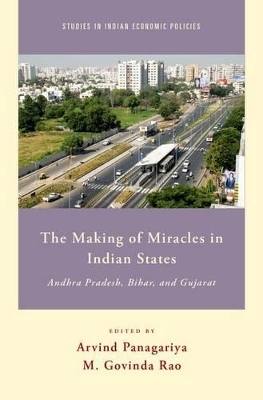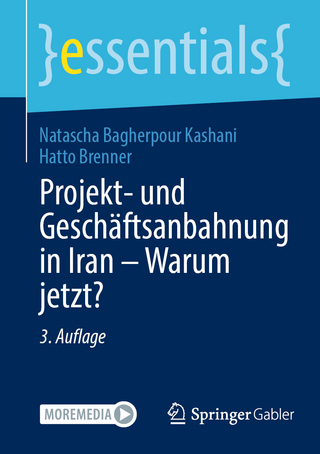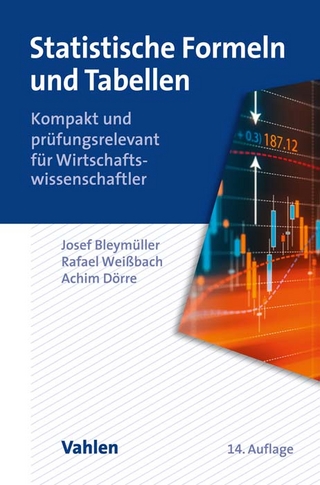
The Making of Miracles in Indian States
Oxford University Press Inc (Verlag)
978-0-19-023662-5 (ISBN)
Growth miracles typically have been studied at the country level. The Making of Miracles in Indian States breaks from that tradition and studies three growth miracles in India at the level of the state: Andhra Pradesh, Bihar, and Gujarat. These are three of the largest and most diverse states in India. Andhra Pradesh is situated in the south of India, Bihar in the east, and Gujarat in the west. Bihar is the poorest among all states in India, Gujarat the third richest among the largest eighteen states, and Andhra Pradesh in the middle. Andhra Pradesh and Gujarat have long coastal lines while Bihar is landlocked. Yet, all of these states have grown at rates exceeding 8% for an entire decade in the 21st century.
Despite many differences in the initial conditions, several common threads tie the high-growth experiences of the three states. First, accelerated growth has permitted acceleration in the growth of development expenditures in all three states, which has helped improve connectivity to markets. Alongside this growth, poverty has seen accelerated decline. Second, the composition of growth matters. Growth in high-value commodities such as fruits and vegetables, commercial crops, dairy, and animal husbandry in Andhra Pradesh and Gujarat has led to accelerated reduction in rural poverty. However, the failure of labor-intensive industry has stunted the migration of workers out of agriculture into industry. Third, the quality of leadership that brings improved governance with it is central to improved outcomes in the states. Visionary leaders---Chandrababu Naidu in Andhra Pradesh, Nitish Kumar in Bihar, and Narendra Modi in Gujarat---played critical roles in the making of all three miracles. Fourth, the three studies also bring out the importance of pro-market reforms and the adoption of technology in development. Finally, the studies show that good economics is also good politics: voters reward the chief ministers who bring about significant improvement to the people's lives.
Arvind Panagariya is a Professor of Economics and Indian Political Economy at Columbia University, Non-resident Senior Fellow at the Brookings Institution, and a former Chief Economist of the Asian Development Bank. Panagariya has written prolifically on global trade policy issues and economic reforms in India. The author of a dozen books, he has also published technical papers in many leading journals and other publications. Professor Panagariya writes an influential monthly column in the Times of India and has been honored with the Padma Bhushan by India. Dr. M. Govinda Rao is a well known scholar in public finance in India. Presently, he is a Member of the Fourteenth Finance Commission, Government of India. His past positions include Director of the National Institute of Public Finance and Policy in New Delhi and Director of the Institute for Social and Economic Change in Bangalore. Dr. Rao was also a Member of Economic Advisory Council to the Prime Minister of India. He has chaired and was a member of several committees. He has written extensive publications in referred journals in addition to his 14 books and monographs.
1. Introduction: Understanding the growth Miracles of Andhra Pradesh, Bihar, and Gujarat ; Arvind Panagariya and M. Govinda Rao ; Chapter 1 References ; PART I: ANDHRA PRADESH ; Mudit Kapoor and Rahul Ahluwalia ; 2. Andhra Pradesh: Setting the Stage ; 3. Growth and Economic Transformation ; 4. Poverty and Employment ; 5. Microfinance and Employment Guarantee Program in Rural Areas ; 6. Health and Education ; 7. Conclusions ; Appendix 1: Implications of Bifurcation and Region-Wise Analysis of Andhra Pradesh ; Part I References ; PART II: BIHAR ; Arnab Mukherji and Anjan Mukherji ; 8. Bihar's Economy in Historical Perspective ; 9. What Went Wrong? ; 10. What Changed? ; 11. Governance and Reforms Matter ; 12. Conclusions ; Part II References ; PART III: GUJARAT ; Archana Dholakia and Ravindra Dholakia ; 13. Growth and Development in Gujarat: An Overview ; 14. Policy Reform in Economic Sectors ; 15. Urban Development ; 16. Fiscal reforms and Performance ; 17. Elementary and Higher Education ; 18. Health ; 19. Governance, Efficiency, and Effectiveness ; 20. Lessons from the Gujarat Experience ; Appendix 2: Sardar Sarovar Project (SSP) on the River Narmada ; Appendix 3: The Earthquake and Its Impact on the Kutchh District ; Part III References ; 21. Lessons from the States and Looking Ahead ; Arvind Panagariya and M. Govinda Rao
| Erscheint lt. Verlag | 9.7.2015 |
|---|---|
| Reihe/Serie | Studies in Indian Economic Policies |
| Verlagsort | New York |
| Sprache | englisch |
| Maße | 236 x 163 mm |
| Gewicht | 680 g |
| Themenwelt | Wirtschaft ► Volkswirtschaftslehre ► Makroökonomie |
| Wirtschaft ► Volkswirtschaftslehre ► Ökonometrie | |
| ISBN-10 | 0-19-023662-0 / 0190236620 |
| ISBN-13 | 978-0-19-023662-5 / 9780190236625 |
| Zustand | Neuware |
| Informationen gemäß Produktsicherheitsverordnung (GPSR) | |
| Haben Sie eine Frage zum Produkt? |
aus dem Bereich


